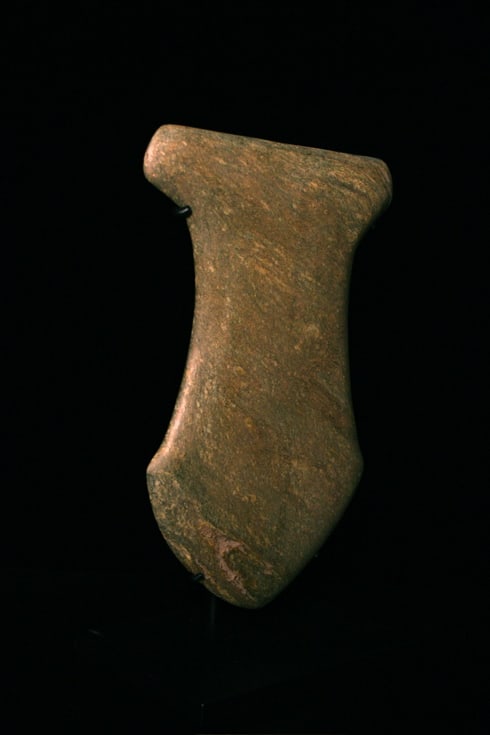Valdivian Green Stone Celt, 3500 BCE - 1800 BCE
Stone
11.5
DA.712
Further images
The Valdivia culture is one of the oldest settled cultures recorded in the Americas. It emerged from the earlier Las Vegas culture and thrived on the on the Santa Elena...
The Valdivia culture is one of the oldest settled cultures recorded in the Americas. It emerged from the earlier Las Vegas culture and thrived on the on the Santa Elena peninsula near the modern-day town of Valdivia, Ecuador between 3500 BC and 1800 BC. The Valdivia culture was discovered in 1956 by the Ecuadorian archeologist Emilio Estrada. Based on comparison of archeological remains and pottery styles (specifically, the similarity between the Valdivian pottery and the ancient Jômon culture on the island of Kyûshû, Japan) Estrada, along with the American archeologist Betty Meggers suggested that a relationship between the people of Ecuador and the people of Japan existed in ancient times. Part of the theory was that the Japanese had conducted trans-Pacific trade. This theory was revolutionary, for no evidence of contact between the two populations had previously been established. The Valdivia lived in a community that built its houses in a circle or oval around a central plaza and were sedentary people that lived off farming and fishing, though occasionally they went hunting for deer. From the remains that have been found, it has been determined that Valdivians cultivated maize, kidney beans, squash, cassava, hot peppers and cotton plants, the latter of which was used to make clothing. Valdivian pottery initially was rough and practical, but it became splendid, delicate and large over time. They generally used red and gray colors; and the polished dark red pottery is characteristic of the Valdivia period. In their ceramics and stone works, the Valdivia culture shows a progression from the most simple to much more complicated works.





